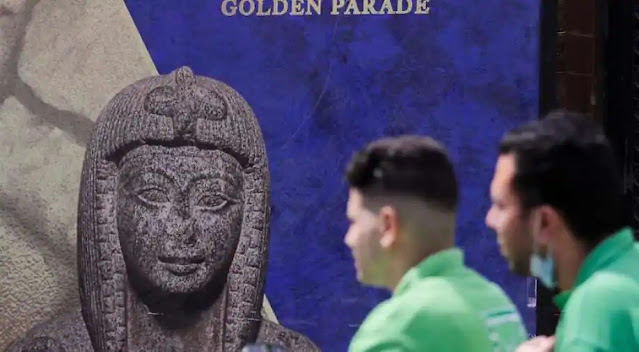What sounds like the plot of a movie was part of a lavish celebration of Egypt's history and a project to relocate some of its greatest treasures to a new high tech facility.
The parade route took place between the Egyptian Museum, their old location near Tahrir Square, to their new home, the National Museum of Egyptian Civilization (NMEC) in Egypt's first Islamic capital, al-Fustat.
"This majestic scene is new evidence of the greatness of [the Egyptian] people, the guardian of this unique civilisation that roots back into the depth of history," Egyptian President Abdel-Fattah El-Sisi.
"I invite all Egyptians and the whole world to follow this unrivaled event -- evoking the spirit of the great ancestors who preserved the homeland and created a civilization in which all humanity takes pride -- to keep on our path that we have started: the path of construction and humanity."
Along with the 22 royal Egyptian mummies, 17 royal sarcophagi were also transported in the procession, which moved along the Nile River and was accompanied by chariots and horses, according to Egypt-run Ahram Online.
Sarcophagi are stone coffins often adorned with sculptures and inscriptions.
Among the mummies are those of kings Ramses II, Seti I, Seqenenre, and Tuthmosis III, in addition to four queens: Ahmose-Nefertari, Tiye, Meritamun and Hatshepsut.
The parade was saluted by 21-gun salutes and joined by a military band. The mummies were transported on special decorated vehicles with their names inscribed in ancient Egyptian hieroglyphs as well as in Arabic.
Preparing the mummies
The aim of the parade was to move the 18 kings and four queens of Egypt, along with their coffins and belongings, from their old home at The Egyptian Museum.









No comments:
Post a Comment